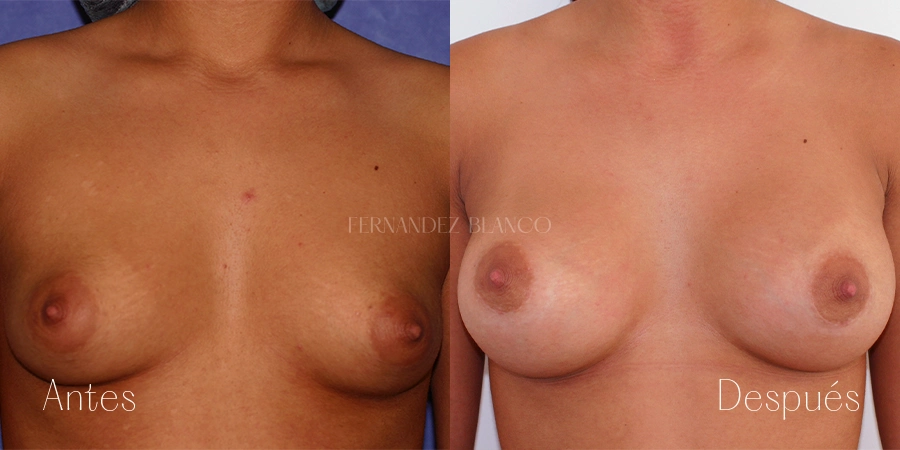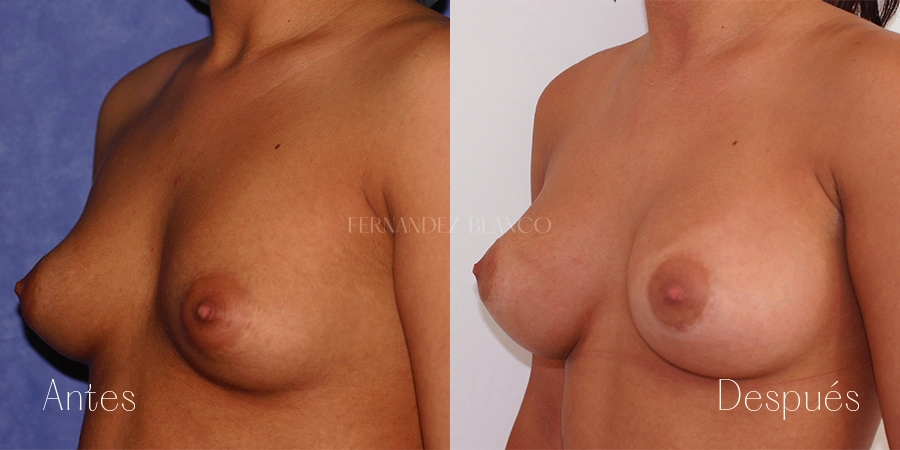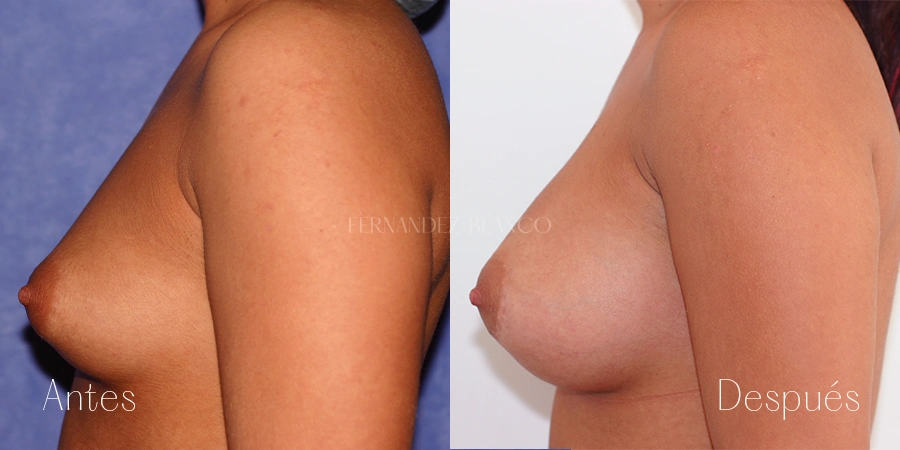


BEFORE AND AFTER



Dr. Alfredo Fernández Blanco
One year
Implantation of breast prosthesis of 260cc retropectoral position with scar under areola. Evolution of 1 year. Surgery performed by Dr. Fernandez Blanco.
Request appointment
If in the process of insertion of breast implants, the ducts that connect the mammary gland through the nipple to the outside are respected, breastfeeding is not interrupted.
We recommend that the patient undergo surgery 6 months after she has stopped breastfeeding, so that the breast is not swollen, is not active and the rate of capsular contracture complication decreases.
Initially breast prostheses were all smooth and at this point, it was thought that roughening the surface of the prosthesis would reduce the rate of capsular contracture. But over time it has been seen that this does not solve the problem.
It has even been discovered that with rough prostheses another type of capsular contracture is created, where the organism wraps the rough prosthesis and attaches a layer of tissue that converts the rough prosthesis into a smooth one and then generates the same capsule. Then it is a double capsule.
It is a decision that must be evaluated according to the circumstances.
When the patient has normal characteristics with a moderate breast (i.e. she has a little breast) and normal skin coverage, it is preferable to use the round prosthesis. When we need to increase the lower pole, because the patient has little breast tissue or tuberous breast, sometimes it is better to place anatomical prosthesis. But not always because sometimes this result can be achieved with a high profile prosthesis. With a correct placement, a high profile achieves a good result.
In front of the muscle: This is a more anatomical plane. If the patient has good coverage, the prosthesis in front of the muscle has excellent results. In addition, when the patient contracts the muscle, the prosthesis is not altered. It has its indications. What happens is that the capsular contracture rate is higher in front of the muscle than behind the muscle.
Behind the muscle: The prosthesis is placed in those cases in which the patient has little breast tissue. The prosthesis is not completely covered by the muscle, only the upper pole, the lower part always remains under the subcutaneous cellular tissue. In the case of folds of the prosthesis this will be hidden under the muscle and as we have mentioned before, in this technique of implantation, the rate of contracture is lower. It also appears that in this position there is less loss of sensation.
The relationship between breast cancer and prostheses has been investigated without revealing any link between the two and the implantation of a breast prosthesis does not increase the risk of breast cancer at all. Surgeons at cancer centers frequently use breast prostheses in reconstructive surgery.
Since the implant is placed behind the gland, the correction of breast asymmetry by this procedure seems to have no influence on lactation.
This procedure is indicated for all those women who decide to remove their breast prostheses. The reasons why a patient decides to remove the implants and not replace them are usually: Complications with the implants, poor aesthetic result and changes in aesthetic taste.
With little time from the first surgery it is possible to return to the patient's natural silhouette, but if they are old implants, the breast is a little emptier, due to the effect of atrophy of the breast tissue and the distension of the skin for a long time, and it will be necessary to use complementary procedures.
We can use autologous fat to increase breast volume and repair defects caused by tissue atrophy. But the volume achieved is never as important as that obtained with breast implants.
In cases where the reduction is significant (from 500 gr.), the patient cannot be assured that she will be able to maintain lactation.
A reduction in sensation is normal in the first few months when the sensation is like numb or "corked" skin. Unless there is some complication, with time, the sensitivity recovers in full.
There is no technique to erase scars. They can be improved with different procedures including laser.
Our medical team will advise you on the treatment that best suits you, the surgical process, the possible risks and everything you need to know before facing such an important decision.